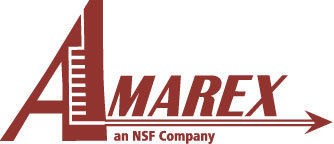- Home
- News and Resources
- Resources
- The Hidden Engine of Regulatory Success: Medical Writing’s Role in High-Quality Clinical Study Reports
The Hidden Engine of Regulatory Success: Medical Writing’s Role in High-Quality Clinical Study Reports
Introduction: Why CSRs Matter More Than Ever
In the lifecycle of a clinical trial, the Clinical Study Report (CSR) is often viewed as the final administrative step. But in reality, it is the cornerstone of regulatory decision-making. For startups and small biopharma companies, the CSR is not just a summary—it’s the story of your study, told to regulators who will decide the future of your product.
A high-quality CSR can accelerate approvals, build credibility, and reduce costly back-and-forth with agencies. A poorly constructed one can delay or derail your submission. In today’s regulatory environment—especially with the evolving ICH E3 R3 guidance—clarity, consistency, and compliance are non-negotiable.
At Amarex, we believe medical writing is not a back-end task. It’s a strategic function that begins early and drives quality throughout the submission process.
The Medical Writing Lifecycle: From Shell to Submission
Medical writing is not a one-step process. It’s a structured, collaborative, and quality-controlled journey that begins well before database lock.
- Early Engagement and Shell Development: Our writers are embedded in the study team from the outset—attending meetings, reviewing protocols, and preparing the CSR shell before the database is locked. This “front-loaded” shell includes study design, methodology, and planned statistical analyses, ensuring alignment with the protocol and SAP.
- Output Data Review: Once the database locks, our Biostatistics team finalizes the data outputs. Medical Writers then review these outputs for consistency, accuracy, and clarity—collaborating with clinical, safety, and statistical teams to ensure the data is interpreted correctly.
- In-Text Table Creation: Writers transform raw outputs into clear, reader-friendly in-text tables. These are formatted for readability and rigorously QC’d to ensure data integrity and traceability.
- Drafting the CSR: With the shell and tables in place, the full CSR is drafted in accordance with ICH E3 guidelines. Every section is written with precision, ensuring that the narrative aligns with the data and supports regulatory expectations.
- Quality Control and Finalization: Each draft undergoes independent QC using detailed checklists. Once approved, the final Word document is converted to a submission-ready PDF, complete with cross-links, bookmarks, and eCTD compliance checks.
Blind Spots and Red Flags: What Can Go Wrong
Even well-run studies can falter at the CSR stage. Here are common pitfalls that can compromise your submission:
- Inconsistent Data: Mismatches between tables and narrative text.
- Formatting Errors: Non-compliance with eCTD or agency-specific formatting requirements.
- Missing Citations: Unreferenced data or literature that undermines credibility.
- Broken Cross-Links: Navigation issues in the final PDF that frustrate reviewers.
- Lack of R3 Readiness: Failure to align with the latest ICH E3 R3 expectations for traceability and digital structure.
Startups are especially vulnerable to these issues due to limited internal resources and experience. That’s why early and expert medical writing support is critical.
The R3 Mandate: What’s Changing and Why It Matters
The upcoming ICH E3 R3 guidance introduces a more structured, modular, and digital-friendly approach to CSRs. Key changes include:
- Greater Emphasis on Traceability: Clear links between data sources, tables, and narrative.
- Structured Content: XML tagging and modular formatting to support digital review.
- Enhanced Clarity and Consistency: Standardized terminology and formatting expectations.
Amarex’s processes are already aligned with these changes. Our writers are trained in R3 principles, and our QC workflows are designed to ensure compliance—so your submission is future-proof.
Case Study: How Early Medical Writing Involvement Saved a Submission
A small biotech sponsor approached Amarex late in their study, with database lock just weeks away. Their internal team had no CSR shell, no formatting standards, and no plan for eCTD compliance.
We immediately embedded a senior Medical Writer into their study team. Within days, we developed a front-loaded shell, aligned with the protocol and SAP. As outputs became available, our team collaborated with biostats and clinical leads to interpret the data and draft the CSR in real time.
Thanks to early intervention and rigorous QC, the final CSR was delivered on time, fully compliant, and accepted by regulators without major queries.
Best Practices for Startups Without Internal Writing Teams
If you’re a startup or small biotech without a dedicated medical writing function, here’s how to set yourself up for success:
- Engage Writers Early: Don’t wait until database lock. Involve writers during protocol development and interim analyses.
- Use a Front-Loaded Shell: This saves time and ensures alignment with the SAP.
- Prioritize QC: Every draft should be independently reviewed using structured checklists.
- Collaborate Cross-Functionally: Writers should work closely with clinical, biostats, and regulatory teams.
- Plan for R3: Ensure your writing partner is trained and equipped for the new compliance landscape.
Conclusion: Medical Writing as a Strategic Investment
For startups, every dollar and day counts. Medical writing may seem like a back-office function—but it’s one of the most strategic investments you can make.
At Amarex, we don’t just write reports. We craft regulatory narratives that are clear, compliant, and compelling. We help you avoid blind spots, meet evolving standards, and accelerate your path to approval.
Your data deserves to be understood. Your CSR deserves to be exceptional. Let’s make it happen.
